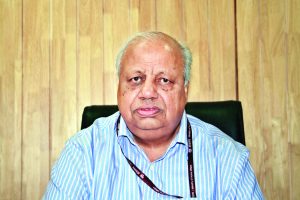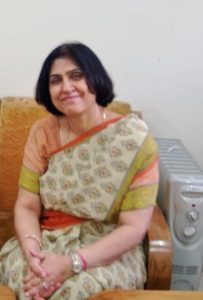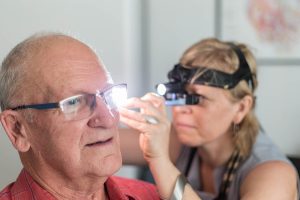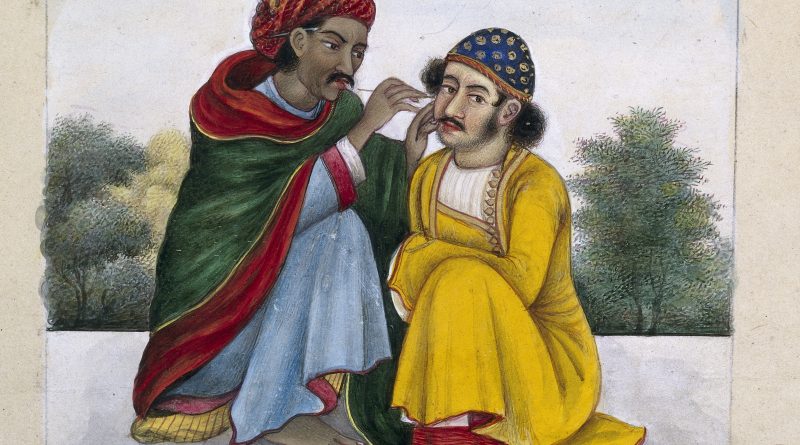Primary but Vital
There is acute need for skilled primary ear care workers for delivering essential ear and hearing care services, considering skewed doctor population ratio in the country…
By Dr A K Aggarwal/ Dr Suneela Garg

In India, the estimated significant auditory impairment reaches up to 6.3% prevalence (moderate to severe hearing loss) out of the total population of 1.25 billion. It is important to note that nearly half of causes of hearing loss are preventable. Lack of awareness regarding importance of ear care is a major challenge in the country. People also have poor knowledge about the resources available for ear care. Myths and Misconceptions worsen the situation.
Also, there is inadequate manpower in the country for addressing ear and hearing care issues. In India, the doctor population ratio is skewed with only 0.7 doctor /1000 population as against WHO’s recommended ratio of one doctor per 1000 population. When it comes to ENT specialists, the situation worsens with there being only 6 ENT doctors per one million population.
In view of immense disease burden and scarce manpower, the existing ENT manpower is already overburdened. National Programme for Control of Blindness has a provision of Ophthalmic Assistant at the community health care level who is responsible for screening patients with eye ailments, test vision and prescribe glasses, assist in conducting eye care camps and organizing community education. However, there is no provision for such personnel under National Programme for Prevention & Control of Deafness. Therefore, the role of skill-based primary ear-care worker becomes vital for delivering essential ear and hearing care services. A skilled primary ear care worker can perform certain clinical and administrative duties and thereby play a significant role right from early identification of people with hearing loss to awareness generation, screening of patients to making adequate referrals.

Firstly, the primary ear care worker can obtain and record the history of patient having ear morbidities including history of patient’s past ear diseases, family history of diseases affecting ear, social history including occupation and details of exposure to industrial or occupational hazards and patient’s current and past general health and trauma, including any surgical procedures.
The primary ear care worker would carry out basic examination to screen and recognize patients with common ear diseases (wax, simple foreign body removal, discharging ear etc.) and counsel & refer patients requiring further medical/surgical care. He/she would also be responsible for promotion of ear and hearing health by creating awareness through community-based actions including promoting and teaching healthy ear and hearing habits, creating awareness of avoidable causes of hearing loss and ear disease, identifying the need for and means of early detection of hearing loss, recognizing signs of hearing loss in infants, children and adults, facilitate in providing and maintaining hearing aids, cochlear implants and other listening and signaling devices and offering support services for hearing aids users.
The primary ear care worker would also be responsible for carrying out hearing assessment and counseling of patients which could be done through an audiometer (a machine for testing hearing) or using voice tests.
The worker’s responsibility would encompass carrying out public health actions through promotion and implementation of immunization, maternal and perinatal health care and child health care. He/she would also undertake advocacy for appropriate ear and hearing services, including ontological and audiological services at health centres and hospitals as close to the community as possible. He would also facilitate in training all teachers in the community in aspects of primary ear and hearing care, the impact of hearing loss and provision of an effective learning environment for children with hearing loss.
 Regarding the rehabilitative aspect, he/she would be responsible for informing children and adults with hearing loss, family members and the general public of available options for the inclusion and integration of people with hearing loss in the community. He/she would advocate for promoting the use of hearing aids and provide support services explaining the benefits and limitations of these devices. The worker would facilitate in sensitizing families of children with hearing loss understand the local policies relating to the education of such children.
Regarding the rehabilitative aspect, he/she would be responsible for informing children and adults with hearing loss, family members and the general public of available options for the inclusion and integration of people with hearing loss in the community. He/she would advocate for promoting the use of hearing aids and provide support services explaining the benefits and limitations of these devices. The worker would facilitate in sensitizing families of children with hearing loss understand the local policies relating to the education of such children.
He/she would facilitate to educate teachers about the special needs of students with hearing loss, including deaf students. He/she would try and explore educational opportunities for children and students with hearing loss at preprimary, primary, secondary and higher levels of education and availability of non-formal and vocational training opportunities for people with hearing loss. He/she would take initiative for developing and encouraging training for speech and language development for persons with hearing loss. He/she would try and engage the local deaf community in the implementation of these activities.
A teleotology model conducted in certain parts of the country has demonstrated that trained community health workers who are equipped with an ear screening handheld device can be deployed in low income urban communities and rural areas. The customized application enables the health workers to gather patient’s details, complaints and other details including an image of the tympanic membrane which could be transferred to an ENT surgeon. Patients with positive conditions are counseled for further treatment. The skilled primary ear care workers could also be trained to implement the teleotology model.
Additionally, his administrative roles and responsibilities would include scheduling appointments, maintaining medical records, recording vital signs and medical histories and preparing patients for further examination and surgeries. To conclude, creation of a cadre of skilled primary ear care workers would go a long way in not only reducing the burden on the existing scare ENT manpower but also address the problem of avoidable hearing loss in the country.
A skilled primary ear care worker can perform certain clinical and administrative duties and thereby play a significant role right from early identification of people with hearing loss
The primary ear care worker would carry out basic examination to screen and recognize patients with common ear diseases (wax, simple foreign body removal, discharging ear etc.) and counsel & refer patients requiring further medical/ surgical care.

